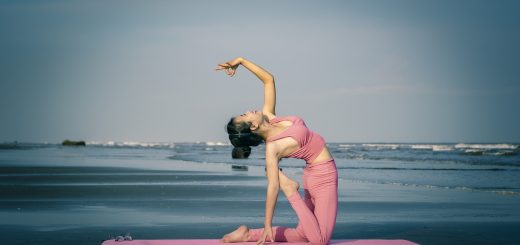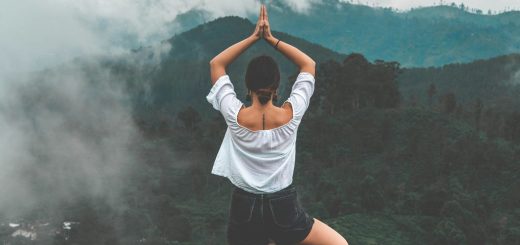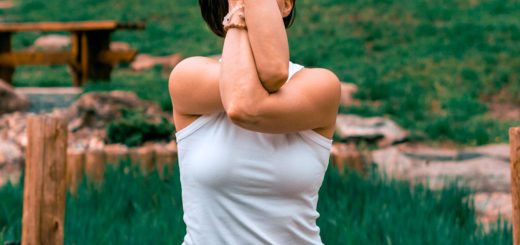Yin Yoga: Long Holds for Flexibility and Calm
Hey there, amazing readers! 🖐️ Just a quick note: yes, we know there are a lot of ads here. Trust us, we get it—it’s not the prettiest look, but they help us keep this blog alive and kicking. Those pesky little ads cover the costs of all the behind-the-scenes magic, from hosting and tech stuff to creating content we hope you’ll love.
We’re committed to delivering quality posts, and your support (even just sticking around despite the ads) means everything to us. So, bear with us, and thanks for helping us keep the good vibes rolling. Now, on to the fun stuff! 😉
TRANSLATE BUTTON AT THE END OF THE ARTICLE
Understanding Yin Yoga
Yin yoga is a slow-paced style of yoga that focuses on holding poses for an extended period, typically ranging from 45 seconds to five minutes or more.
Unlike more dynamic forms of yoga, Yin yoga targets the deep connective tissues in the body, such as ligaments, tendons, and fascia, rather than the muscles.
This style of yoga is rooted in the Taoist concept of yin and yang, where yin represents stillness and yang represents movement.
In Yin yoga, practitioners aim to find relaxation and release tension in the body through passive stretching.
Benefits of Long Holds
The extended holds in Yin yoga offer a multitude of benefits for both the body and mind.
By holding poses for a prolonged period, you can increase flexibility in the connective tissues, improve joint mobility, and enhance circulation throughout the body.
Additionally, long holds in Yin yoga help to calm the nervous system, reduce stress, and promote relaxation.
This style of yoga is particularly beneficial for those looking to balance a fast-paced lifestyle with moments of tranquility and peace.
Improving Flexibility
Yin yoga is an excellent practice for improving flexibility, especially in areas like the hips, pelvis, and lower spine.
By holding poses for an extended period, you can gently stretch and lengthen the connective tissues, allowing for greater range of motion over time.
Regular practice of Yin yoga can help prevent injuries, improve posture, and alleviate stiffness in the body.
Whether you are a seasoned yogi or a beginner, Yin yoga offers a safe and effective way to increase flexibility and mobility.
Cultivating Calmness
One of the key benefits of Yin yoga is its ability to cultivate a sense of calmness and relaxation.
The slow, meditative nature of Yin practice encourages practitioners to focus on their breath, quiet the mind, and let go of tension held in the body.
By surrendering to the stillness of each pose, you can experience a deep sense of tranquility and inner peace.
This mental clarity and emotional balance can have a profound impact on your overall well-being, helping you navigate life’s challenges with greater ease and resilience.
Targeting Connective Tissues
Unlike more active styles of yoga that primarily target the muscles, Yin yoga focuses on the deeper connective tissues in the body.
These tissues, such as ligaments, tendons, and fascia, are less elastic than muscles and require longer holds to be effectively stretched.
By holding poses for an extended period, you can gently stress these tissues, stimulating collagen production and increasing their flexibility and strength.
This targeted approach in Yin yoga can help prevent injuries, improve joint health, and enhance overall mobility.
Balancing Energy Flow
In traditional Chinese medicine, the concept of energy flow or qi plays a significant role in health and well-being.
Yin yoga aims to balance the flow of qi through the body’s meridian channels, which are believed to be connected to various organs and emotions.
By holding poses for an extended period, you can release energetic blockages, promote the smooth flow of qi, and restore balance to both the physical and energetic body.
This harmonizing effect can lead to increased vitality, improved immunity, and a greater sense of overall vitality.
Mindfulness in Practice
Yin yoga provides an opportunity to cultivate mindfulness and presence on the mat.
Through the practice of holding poses for an extended period, practitioners are encouraged to pay attention to their breath, sensations in the body, and thoughts that arise during the practice.
This heightened awareness can help you develop a deeper connection to yourself, increase self-compassion, and enhance emotional resilience.
By bringing mindfulness into your Yin yoga practice, you can experience a sense of grounding and inner peace that extends beyond the mat into your daily life.
Poses for Yin Yoga
Some common Yin yoga poses include:
Child’s Pose (Balasana)
Dragon Pose (Yin Low Lunge)
Swan Pose (Pigeon Pose)
Butterfly Pose (Baddha Konasana)
Sphinx Pose
Supported Fish Pose
Melting Heart Pose (Anahatasana)
Shoelace Pose (Gomukhasana)
Caterpillar Pose (Paschimottanasana)
Reclining Twist
These poses target different areas of the body, such as the hips, spine, and shoulders, and can be modified to suit your level of flexibility and comfort.
When practicing Yin yoga, it’s essential to listen to your body, honor your limitations, and approach each pose with a sense of curiosity and openness.
Breathwork in Yin Yoga
Breathwork is an integral part of Yin yoga practice, helping to deepen the stretch, calm the mind, and connect with the present moment.
In Yin yoga, the emphasis is on slow, deep breathing through the nose, filling the belly, ribcage, and chest with each inhale, and releasing fully with each exhale.
By focusing on your breath during long holds, you can find a sense of ease and relaxation in the body, allowing for deeper release and surrender into the pose.
Incorporating mindful breathing into your Yin practice can enhance the benefits of the poses and create a more profound sense of inner peace.
Incorporating Meditation
Meditation can be a powerful complement to Yin yoga, enhancing the mind-body connection and deepening the practice.
After completing a series of Yin poses, you can transition into a seated or lying meditation to further quiet the mind and cultivate a sense of inner stillness.
By focusing on your breath, body sensations, or a chosen mantra, you can enter a state of deep relaxation and presence.
Meditation in combination with Yin yoga can help reduce stress, improve mental clarity, and promote overall well-being.
Consider incorporating a short meditation at the end of your Yin practice to fully integrate the physical and mental benefits of the practice.
Tips for Beginners
If you’re new to Yin yoga, here are some tips to help you get started:
Start slowly and gently, listening to your body and honoring your limits.
Use props such as bolsters, blocks, and blankets to support your body in poses.
Focus on your breath and cultivate a sense of relaxation and surrender in each pose.
Hold poses for a duration that feels comfortable, gradually increasing the hold time as you progress.
Experiment with different poses to find what works best for your body and needs.
Stay hydrated before and after your practice to support the detoxification process.
Practice self-compassion and patience as you explore the practice of Yin yoga.
Consider taking a Yin yoga class or following online tutorials to deepen your understanding of the practice.
Set aside dedicated time for your Yin practice, creating a calm and peaceful environment for your practice.
Enjoy the journey and embrace the process of self-discovery and inner exploration that Yin yoga offers.
Integrating Yin Yoga into Your Routine
To incorporate Yin yoga into your daily routine, consider the following suggestions:
Designate specific days or times for your Yin practice, creating a consistent schedule.
Combine Yin yoga with other forms of exercise, such as dynamic yoga, strength training, or cardio, to create a well-rounded fitness routine.
Practice Yin yoga in the evening to unwind and prepare your body for restful sleep.
Create a dedicated space for your Yin practice, free from distractions and conducive to relaxation.
Explore different Yin yoga sequences and poses to keep your practice varied and engaging.
Consider attending a Yin yoga workshop or retreat to deepen your practice and connect with like-minded individuals.
Listen to your body and adapt your practice based on how you feel each day, honoring your energy levels and limitations.
Share your Yin yoga journey with others, whether through social media, a blog, or in conversations with friends and family.
Be open to the transformative effects of Yin yoga on your physical, mental, and emotional well-being.
Embrace the slow, meditative nature of Yin yoga as a sanctuary for self-care and inner exploration.
Conclusion
Yin yoga offers a unique and transformative approach to yoga practice, focusing on long holds, deep stretches, and inner stillness.
By targeting the connective tissues, balancing energy flow, and cultivating mindfulness, Yin yoga provides a comprehensive way to enhance flexibility, calmness, and overall well-being.
Whether you’re a seasoned yogi looking to deepen your practice or a beginner seeking a gentle and restorative form of exercise, Yin yoga offers a wealth of benefits for the body and mind.
By incorporating Yin yoga into your routine and embracing the slow, meditative nature of the practice, you can experience a profound sense of relaxation, rejuvenation, and inner peace.
So roll out your mat, take a deep breath, and surrender to the transformative power of Yin yoga.

The Enlightenment Journey is a remarkable collection of writings authored by a distinguished group of experts in the fields of spirituality, new age, and esoteric knowledge.
This anthology features a diverse assembly of well-experienced authors who bring their profound insights and credible perspectives to the forefront.
Each contributor possesses a wealth of knowledge and wisdom, making them authorities in their respective domains.
Together, they offer readers a transformative journey into the realms of spiritual growth, self-discovery, and esoteric enlightenment.
The Enlightenment Journey is a testament to the collective expertise of these luminaries, providing readers with a rich tapestry of ideas and information to illuminate their spiritual path.
Our Diverse Expertise 🌟
While our primary focus is on spirituality and esotericism, we are equally passionate about exploring a wide range of other topics and niches 🌍📚. Our experienced team is dedicated to delivering high-quality, informative content across various subjects ✨.
To ensure we provide the most accurate and valuable insights, we collaborate with trusted experts in their respective domains 🧑🏫👩🏫. This allows us to offer well-rounded perspectives and knowledge to our readers.
Our blog originally focused on spirituality and metaphysics, but we’ve since expanded to cover a wide range of niches. Don’t worry—we continue to publish a lot of articles on spirituality! Frequently visit our blog to explore our diverse content and stay tuned for more insightful reads.






